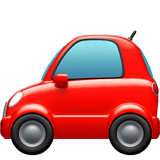
Winter tires in Luxembourg in 2024-2025 season
Winter is here again, the days are getting shorter, the temperatures are getting colder and colder and it's also time to change the tires on your car. If you have been driving in the country for a long time you will surely know this, but if you are new to the roads of the Grand Duchy you may not be aware of it. But don't worry, in this article we will tell you everything you need to know about winter tires.
For cross-border workers, not only Luxembourg’s legislation is important, but also that of their own country. It is important then to mention an important change in French legislation, from November 1, 2024, the only authorized snow tires will be those using the designation “3PMSF” (3 Peak Mountain Snow Flake), identifiable by the presence of the “alpine symbol” illustrated by a 3-peaked mountain containing a snowflake. Those marked only with “M+S” will no longer be accepted.
Overview of driving regulations in Luxembourg
When winter arrives, in Luxembourg, winter tires should be fitted to the car, as cold, snow and ice affect the driving and the grip of the vehicle. It is a question of safety, winter tires are softer and more flexible than summer tires when the temperature drops and offer better grip, in addition, their grooves allow a better evacuation of water, snow and slush. All this leads to a 25% reduction in braking distances when using winter tires compared to summer tires.
Now, there are many questions to be answered: which vehicles must have winter tires, which tires are accepted, and from what date should they be changed? Let's review all these questions and more to make everything clear.
Comparison with neighboring countries
Knowing the Luxembourg legislation is important but for many it is also important to know the legislation of neighboring countries. So let's take a comparative look at the laws of France, Belgium and Germany.
| Country | Luxembourg | France | Belgium | Germany |
| Type of vehicles required to use winter tires | Category M1 vehicles (e.g., passenger cars) must have winter tires on all wheels. Trucks, buses, coaches, and motorhomes over 3,500 kg must have winter tires on all driven axles only. | Light vehicles, commercial vehicles, and buses | No requirement for any vehicle type | All motor vehicles |
| Areas of the country where winter tires are required | Throughout the country, under winter conditions (snow, ice, frost) | 48 departments in mountainous regions. | Not applicable | Throughout the country, under winter conditions (snow, ice, frost) |
| Mandatory period | No fixed period. Required when conditions demand it | November 1 to March 31 | Not applicable | No fixed period. Required when conditions demand it |
| Accepted types of tires | Tires with M+S or 3PMSF marking. | Tires with 3PMSF marking are required starting in 2024. | No specific requirements. Recommended in adverse conditions | Tires with 3PMSF marking are required starting in 2024. |
| Fines for non-compliance | Fine of 74 euros | Fine of 135 euros | Not applicable | Fine from 60 to 120 euros |
One of the most important points to take into account is a change in the regulations in France and Germany that takes place as of November 1, 2024. As of this date, the use of winter tires with the 3PMSF winter symbol represented by a mountain with three peaks and a snowflake will be mandatory in these countries. Tires with the M+S symbol that were previously accepted will no longer be accepted.
If you are a cross-border worker, ensure your tires meet the requirements of any country you visit.
Lifehacks and tips for drivers
To conclude, we're going to review some tips you might find helpful when the cold and snow start to take over the roads.









As soon as winter begins to set in it is important to fit winter tires in Luxembourg, in this article we have seen the main regulations and the rules to respect, however, beyond respecting the rules it is important to do it for safety. A braking distance reduced by 25% can make the difference between running someone over or not. Likewise, better maneuverability can mean being able to maintain control of the vehicle in a curve or going straight ahead and crashing into whatever is in front of you.
Respect the rules not just for the sake of respecting them, but because they are there for your safety and the safety of others. And finally, don't forget the tips we left you in the last section.
Frequently Asked Questions (FAQ)
What types of tires are accepted as winter tires in Luxembourg?
Do all vehicles need to have winter tires in Luxembourg?
When are winter tires required in Luxembourg?
What is the difference between M+S and 3PMSF markings on tires?
Are four-season tires allowed as winter tires in Luxembourg?
Source: www.europe-consommateurs.eu, guichet.public.lu, www.service-public.fr, www.securite-routiere.gouv.fr, police.public.lu, cms.acl.lu, www.lesfrontaliers.lu, www.lesfrontaliers.lu, www.axa.lu, www.foyer.lu, www.volkswagen.lu, www.virgule.lu, lequotidien.lu
We took photos from these sources: Christian Wiediger, Unsplash